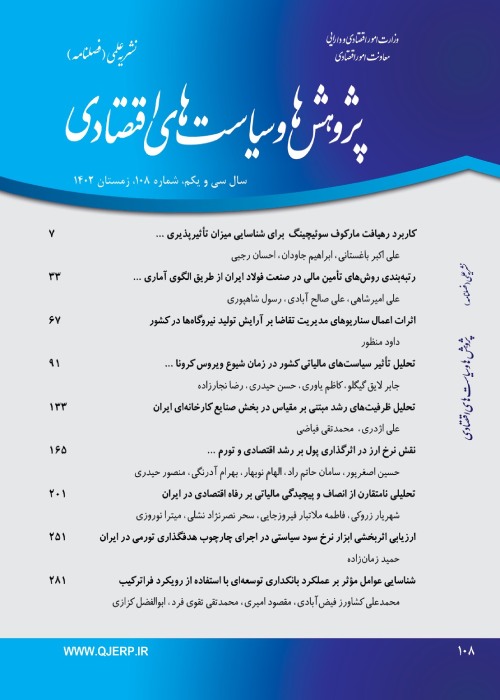Investigating the Effects of Financial Risks with Central Bank Policy Intervention and Foreign Exchange Market Pressure on the Stability of Banking sector Based on Gerton and Ruper Model: Nonlinear Smooth Transition Regression Approach
In the present study, in the first stage, using Gerton and Roper (1977) model, the central bank policy intervention index and foreign exchange market pressure were calculated. Then, using the STAR regression model, the nonlinear effects of financial risks with policy intervention of the central bank and the pressure of the foreign exchange market on the country's banking stability are examined. According to the results of Gerton and Roper models; In 26 of the 33 years surveyed, the country's economy has faced increasing pressure from the foreign exchange market. Also, the average degree of central bank intervention is 0.79. In other words, in the period between 1986 and 1397, 79% of the central bank intervention policy was inconsistent. The results of STAR model estimation with the central bank intervention as a transition variable show that the threshold value of the transition variable is 6.55 and with the central bank intervention exceeding this threshold, the reaction of monetary officials to increase this variable has increased sharply. As the central bank's intervention has increased, policymakers have tried to control the growth of the exchange rate and prevent it from rising by reacting more. Therefore, when the exchange rate experiences higher growth, policymakers are more in control of the exchange rate and pay less attention to its deviations, which increases the liquidity and credit risk of banks and leads to a decrease in the country's banking stability. According to the estimation results, the variables of capital adequacy and economic growth have a positive effect and central bank intervention, liquidity risk, credit risk and inflation rate also have a negative effect on bank stability. The negative coefficient of the intervention index indicate that the central bank, in the face of increasing positive exchange rate deviations, is pursuing a decline in the growth of its foreign reserves. Therefore, expansionary monetary policies need to be adjusted for the stabilization or non-stabilization of the exchange rate. Also, the high risk of banking activities and the transfer of this risk to other monetary and financial sectors of the economy, leads to increased costs and complexity of the process of receiving facilities, imposing this cost on other facilities and reducing the ability to provide credit, diversion and failure to meet facility objectives. Banking income instability, which requires more attention to financial and banking indicators.
- حق عضویت دریافتی صرف حمایت از نشریات عضو و نگهداری، تکمیل و توسعه مگیران میشود.
- پرداخت حق اشتراک و دانلود مقالات اجازه بازنشر آن در سایر رسانههای چاپی و دیجیتال را به کاربر نمیدهد.



